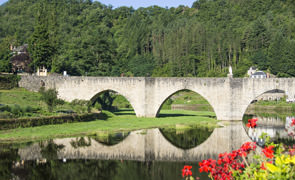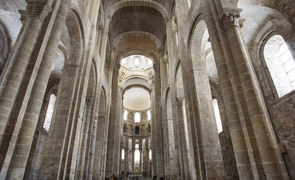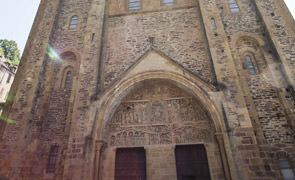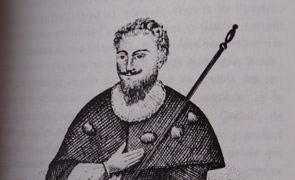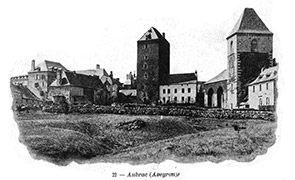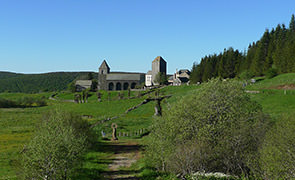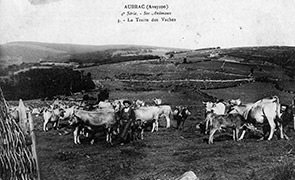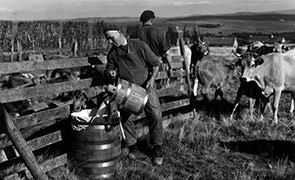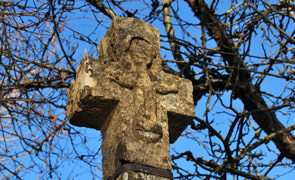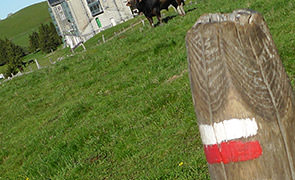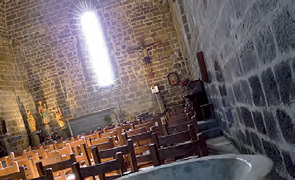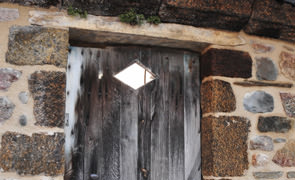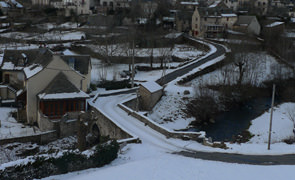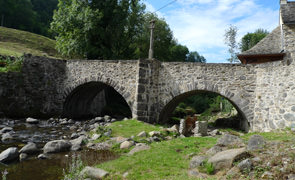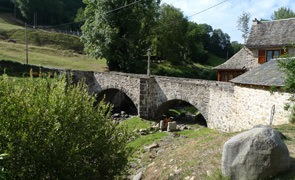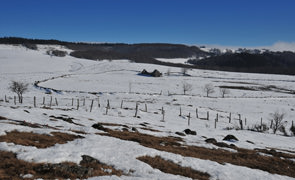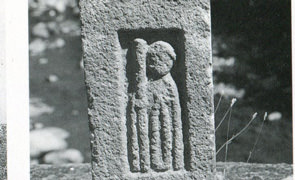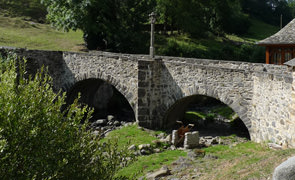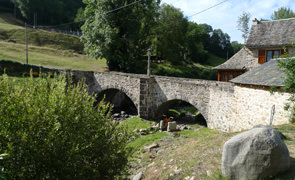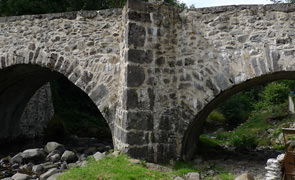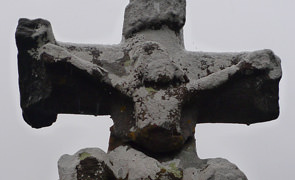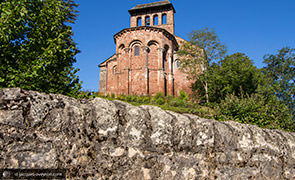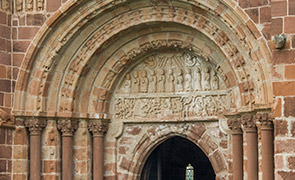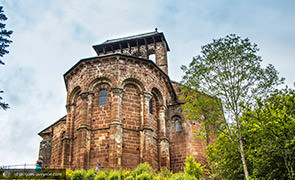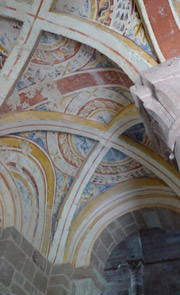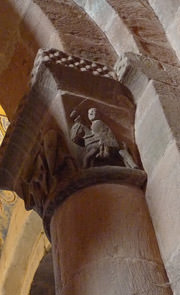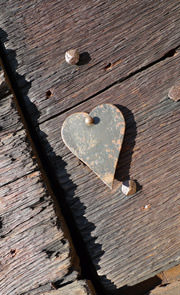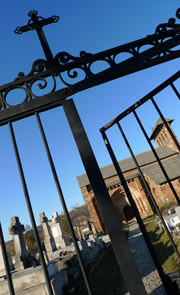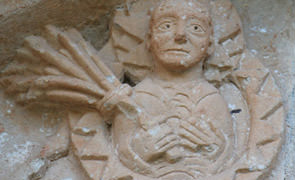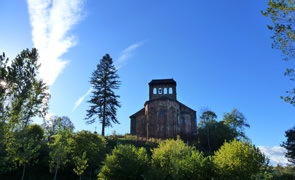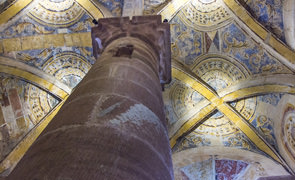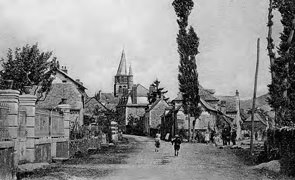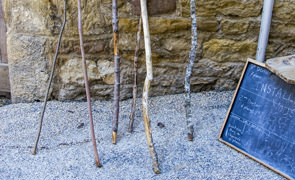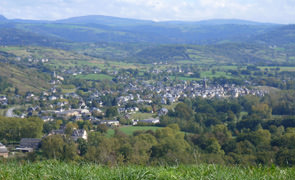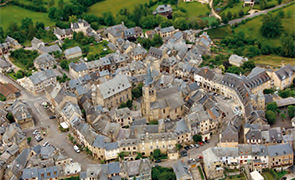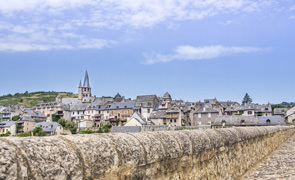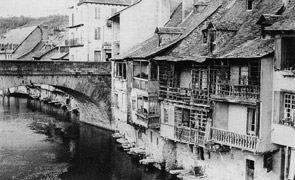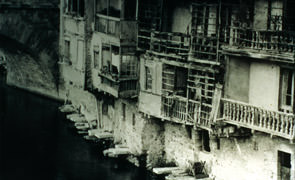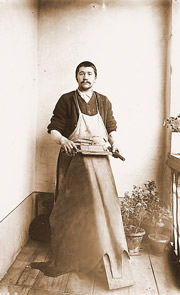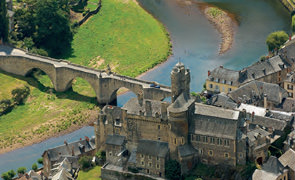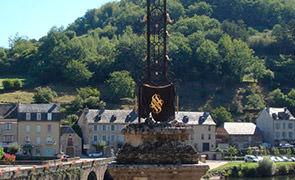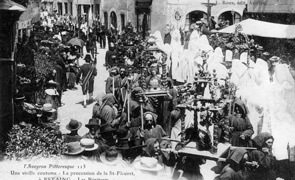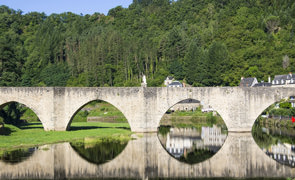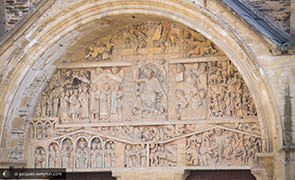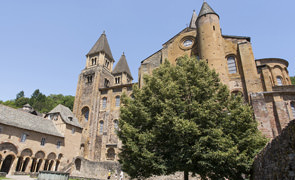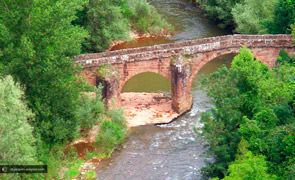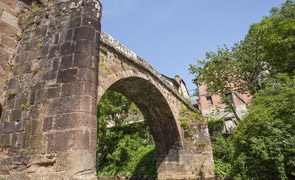The Route in Aveyron
In 1998, the "Routes of Santiago de Compostela in France" were inscribed on the World Heritage List because of their exceptional universal value. This inscription took the form of a selection of 71 buildings and 7 stretches of path which bear witness to the routes and places frequented by pilgrims wanting to go to Santiago de Compostela. In Aveyron, several edifices and natural areas belong to this World Heritage because they are outstanding landmarks on the route followed by pilgrims.
Nasbinals (Lozère) - Aubrac - Saint-Chély-d'Aubrac
These 17 km are part of the seven sections of the route from Le Puy en Velay inscribed on the World Heritage List by UNESCO. This section is probably the most captivating in terms of scenery and diversity. It partly follows the routes established prior to the pilgrimage to Santiago de Compostela, which changed in the Middle Ages to rejoin places designed to welcome pilgrims, such as the Domerie d'Aubrac. The current agricultural and social balance globally corresponds to the principles laid down in medieval times, with highly structured trading between the mountain and the surrounding valleys.
Pilgrims' Bridge at Saint Chély d'Aubrac
This bridge was the only point where it was possible to cross the Boralde without getting one's feet wet. 15 metres long and 4.60 metres wide, it is still in remarkably good condition. Its cross, with a shaft engraved with a pilgrim, is a rare illustration of what the route was used for.
Saint-Côme-d'Olt - Espalion - Estaing
This part of the Lot Valley formed an easy highway, used by thousands of pilgrims. The Romanesque buildings that line the route and the bridges at Espalion and Estaing are proof of this. On the right bank, the south-facing slopes enabled vineyards to be planted, an important part of the Eucharistic ritual, in an area well into the Massif Central. On the left bank, the slopes, where the former cereal-growing plateau of the causse Comtal ends, bear the hallmark of a variety of volcanic formations. The difference in geological features is spectacular, creating extremely diverse vegetation and farming practices that have an impact on the traditional habitat.
Pont Vieux bridge in Espalion
Pont Vieux bridge is mentioned in the charter of 1060 kept in the cartulary of Conques abbey. The oldest bridge in Rouergue to span the fast-flowing River Lot, it was of capital importance to the pilgrimage to Santiago de Compostela and also for goods and people travelling between the Massif Central and Rouergue. The gothic structure, which has been modified several times, was initially equipped with three towers that used to house a guardroom, like the Pont Valentré bridge in Cahors.
The bridge in Estaing
Built at the beginning of the 16C, thanks to indulgences from François d'Estaing, bishop of Rodez, this bridge strengthened Estaing's presence in trade. It enabled pilgrims on the Via Podiensis to cross the Lot easily in order to worship the relics of Saint Fleuret, thus contributing to the medieval town's influence.
Conques Abbey-church
After attempting to get hold of the relics of Saint Vincent, in 866, the monk Ariviscus succeeded in stealing the relics of Sainte Foy (Saint Faith or Fides), a young Christian martyred in 303, from the monastery in Agen where they were venerated.
The reputation of her miracles spread. Conques became an extremely important centre of pilgrimage that welcomed pilgrims from all over Europe, and who were soon joined by those going to Santiago de Compostela. In the 11C, this expansion made it possible for Abbot Odolric to start building the current abbey-church. Like other great Romanesque churches on the Way of Saint James, Sainte Foy Abbey-church in Conques has a typical layout so that pilgrims can be made welcome and move around. Its Treasure is one of Europe’s five finest examples of medieval silver and gold plate of this kind.
Romanesque bridge in Conques
This bridge, wrongly referred to as "Roman", dates back to the 14C. Given the influx of pilgrims to Conques as early as the 11C, older structures enabling them to get across the Dourdou probably came before this bridge. Built of red sandstone, the bridge is 50 metres long and has 5 semicircular arches.



